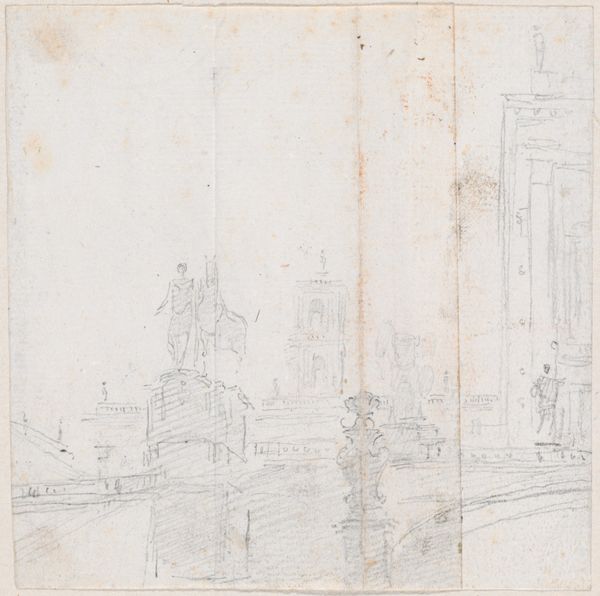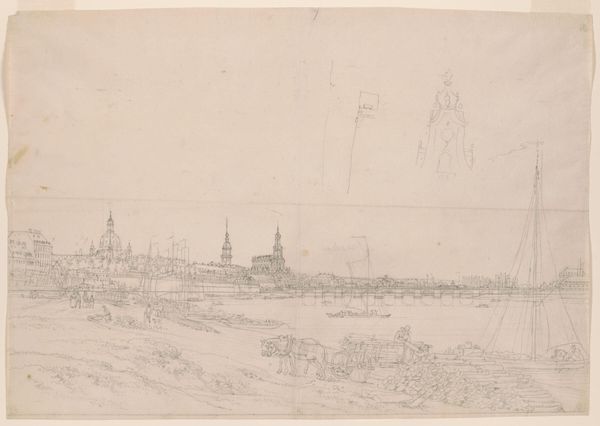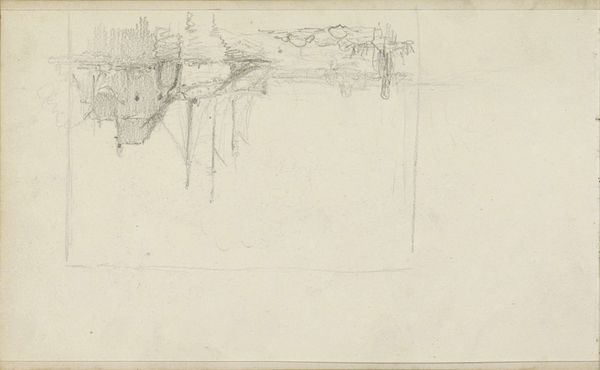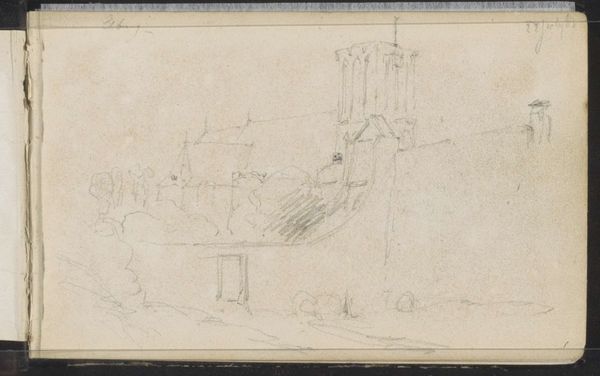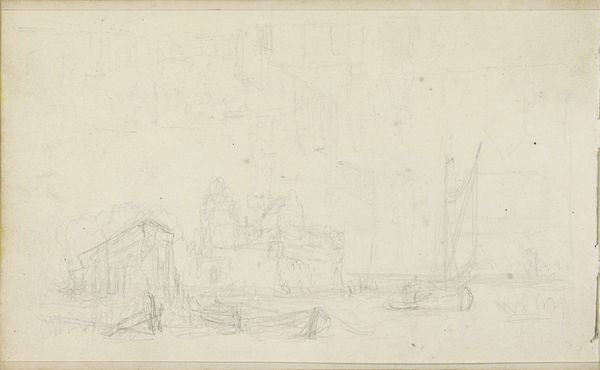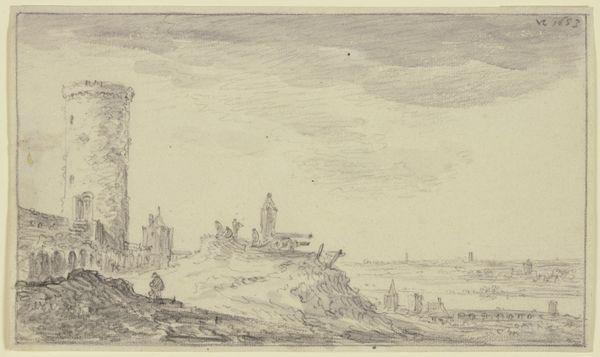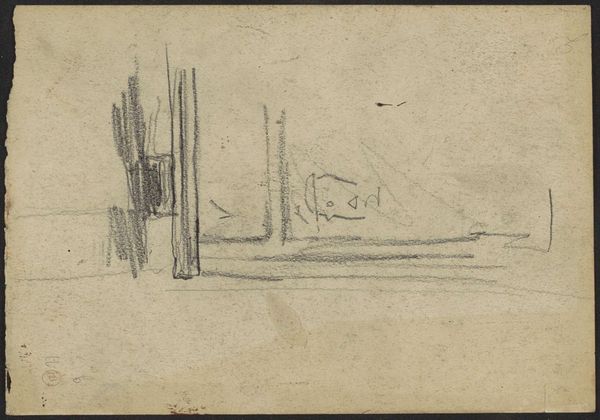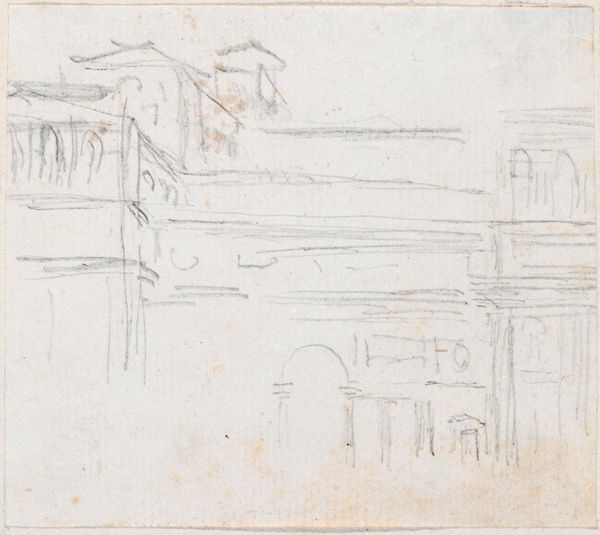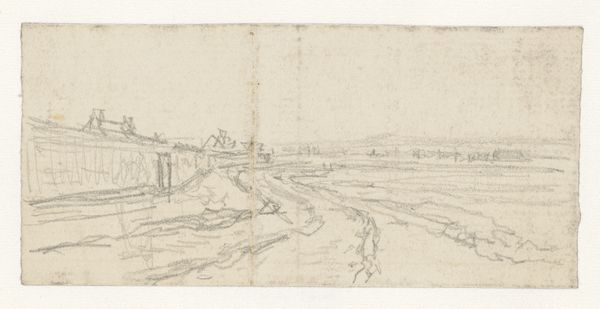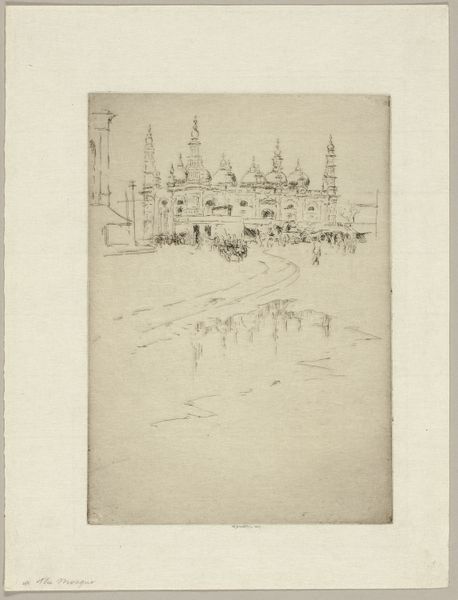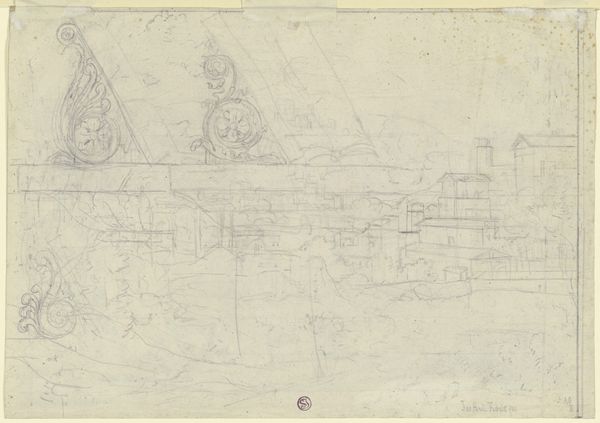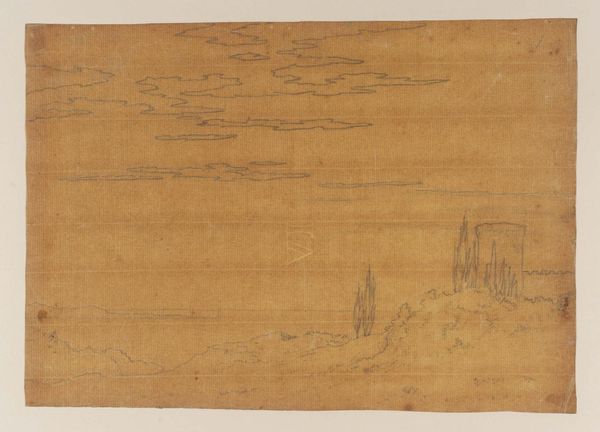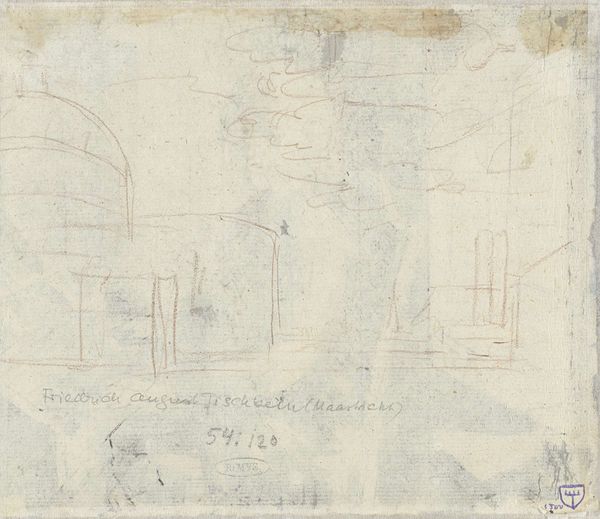
Design for a Stage Set at the Opéra, Paris 1830 - 1890
0:00
0:00
Dimensions: sheet: 11 1/16 x 19 7/16 in. (28.1 x 49.4 cm)
Copyright: Public Domain
This is Eugène Cicéri's, "Design for a Stage Set at the Opéra, Paris," an undated sketch made with graphite on paper. Cicéri, born in 1813, was the son of Pierre-Luc-Charles Cicéri, who was also a painter and stage designer. Here, the architecture looms large and somewhat distorted in the foreground, while the city, somewhere in the distance, is barely visible. In the 19th century, the Paris Opéra was more than just a place for entertainment; it was a crucial site for displaying social status and cultural values, often attended by the city’s elite. Stage design, therefore, played a critical role in shaping the audience’s experience and perception. Cicéri’s design suggests a world of grandeur and illusion, reflecting the opulence associated with the Opéra and the broader theatrical culture of Paris. While seemingly traditional, stage designs like these also contributed to constructing narratives around power, gender, and class, influencing how audiences understood their world.
Comments
No comments
Be the first to comment and join the conversation on the ultimate creative platform.
